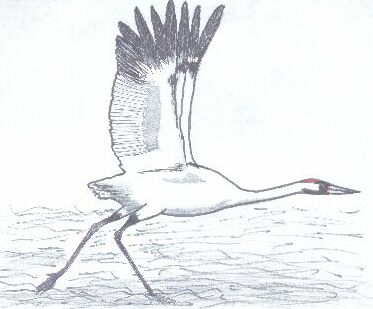STATUS (an endangered species)
-about 1300 to 1400 in 1860 in western Canada and US
-numbers dropped after arrival of settlers
-by 1912 estimated 80 to 100 left
-protected by law in 1916
-1941 only 22 wild Whooping Cranes left
-by 1942 the number dropped to 16
-49 cranes in 1974 and 70 in 1977
-US wildlife officials counted 149 cranes in 1995
-today, estimated over 263 in the wild
-May 2011, 75 nests in Wood Buffalo National Park.
-North American population in 2010 estimated at 574 (captive 167, wild 407)
HABITAT - WHERE THEY LIVE
-marshy swampy areas on the prairies, or aspen parkland
-nest in the wetlands of
Wood Buffalo National Park (northeast Alberta-NWT)
MAP
-arrive in late April and leave in September.
-fly 4000 km (2500 miles) south to Texas
-winter at salt flats and marshes of a wildlife refuge

